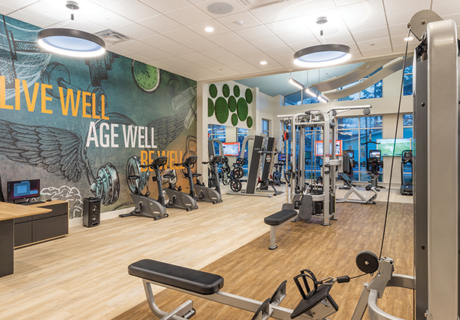Strengthening Your Competitive Edge
Environments for Aging: In your session at the Environments for Aging Expo & Conference, you will share results from a study of senior living professionals and discuss design principles to improve a community’s competitiveness. How has the senior living market changed over the last decade?
Eka Rahardjo: The last decade has seen a rapid rise in the number of senior living facilities built, so, in order to succeed, each senior living community has to work harder to win potential residents. One way of achieving that is by offering amenities prevalent within the targeted market.
Zhe Wang: The quality of senior living services has been generally improved over the last decade. More senior living communities are starting to embrace active living to address the needs of baby boomers. These new older adults are more proactive about their living environments than past generations, and more options for them to choose for senior living have shown up in the marketplace, too,
such as university-based communities instead of continuing-care retirement communities.
Why is it important for architects, designers, and operators to be focused on competitiveness in 2017?
Wang: Based on our survey of senior living professionals, 95 percent of participants believe the quality of environments in senior living communities has a strong impact on their search for new customers. Architects, designers, and operators can contribute to improving a community’s competitiveness.
Rahardjo: The boomer generation wants to lead a more active lifestyle and places more emphasis on individualistic pursuits, which puts more pressure on facilities to provide the right amenities. To succeed in the market, providers and architects have to be able to offer and match the current demands as well as plan for future targeted markets.
How can design help achieve that?
Wang: Based on current findings from our surveys, the top features include well-designed residential units, shared spaces, home-like decorations, and indoor/outdoor transitions. Sun porches, balconies, and outdoor areas for walking should also be considered.
What’s one area where you’d like to see designers and operators put more focus?
Wang: Providing a third place for older adults in senior living communities. It could be an area outdoors or an indoor/outdoor transitional area where they can socialize or enjoy a moment of quiet. This may be developed in the context of local cultures or associated with the needs of residents in a specific community.
Rahardjo: The need to provide this third place is very real and critical if we’re trying to fulfill residents’ need to have a choice of being active or passive participants, or spectators. There’s a need to create a private space other than an area within the resident unit where one can be oneself without feeling alienated.
Anne DiNardo is executive editor of Environments for Aging. She can be reached at ANNE.DINARDO@EMERALDEXPO.COM.
Learn more at the EFA Expo
The speakers will share more on what it means to design for competitiveness and specific ways to optimize facility design for resident-centered care in the session, “What Kind of Environments Should a Competitive Senior Living Facility Have?” at the Environments for Aging Expo & Conference, Feb. 26-March 1, at Mandalay Bay Convention Center in Las Vegas. For more information, go to EnvironmentsforAging.com.




